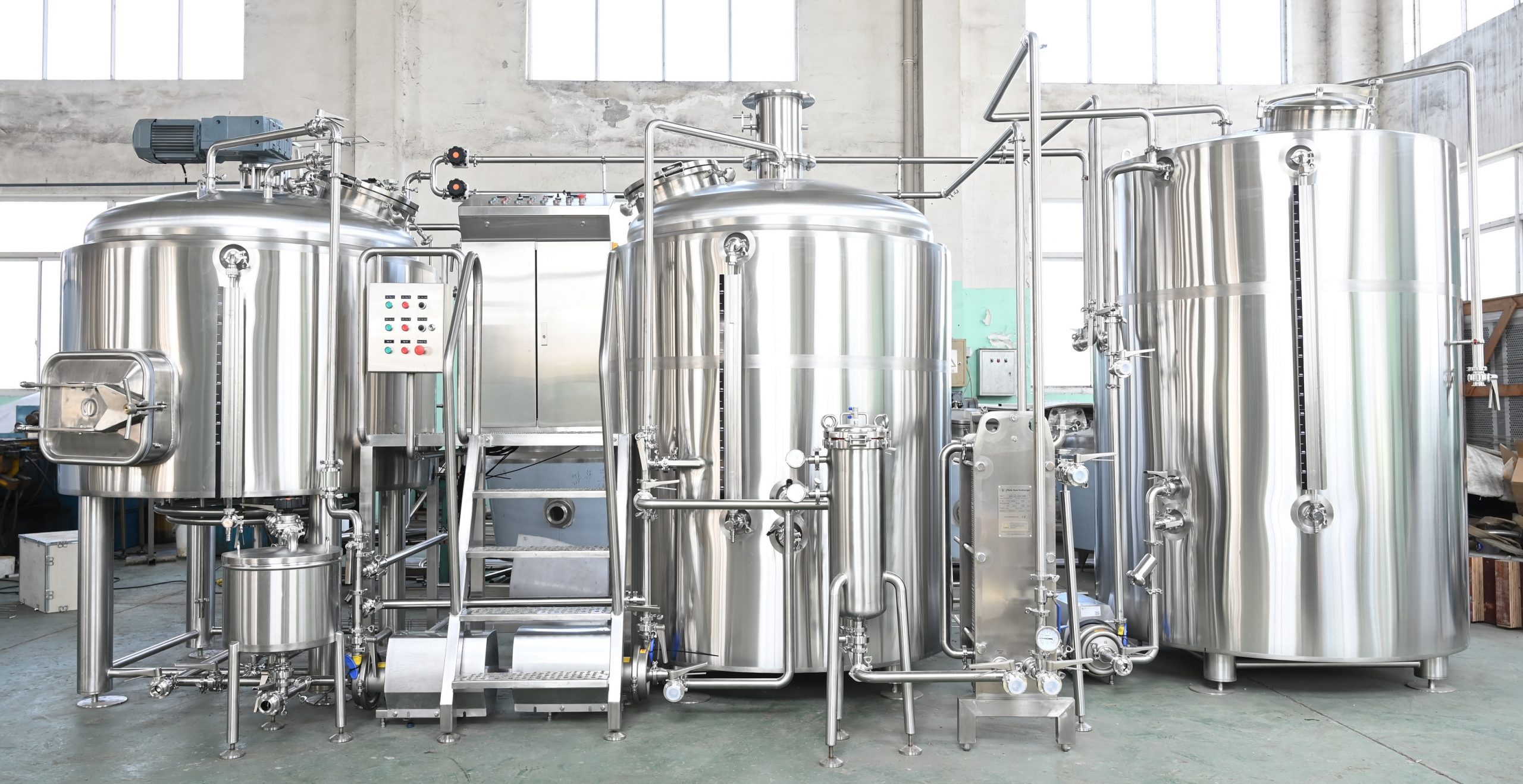
Why Need A Bigger Capacity Hot Liquor Tank For Brewhouse Equipment?

A larger capacity hot liquor tank (HLT) in a brewhouse can offer several advantages, depending on the scale of your brewing operation and your specific brewing process. The HLT is a crucial component in the brewing process, used to heat and store hot water for various purposes, primarily in mashing and sparging. Here are some reasons why a brewery might need a bigger capacity HLT:
1.Batch Size: One of the most common reasons for a larger HLT is to accommodate larger batch sizes. If you are brewing more substantial quantities of beer, you’ll need a larger volume of hot water to mash in and sparge the grains effectively. A larger HLT ensures you have enough hot water to cover your entire batch.
2.Mashing and Sparging Efficiency: A larger HLT can help maintain consistent temperatures during mashing and sparging, which is critical for achieving high-quality wort. It ensures that you have enough hot water to hit your target mash temperatures and volumes, leading to more efficient conversion of starches to sugars.
3.Versatility: A larger HLT can make your brewing process more versatile. You can adjust the water-to-grain ratio and achieve different mashing profiles to create a wider range of beer styles. This versatility can be especially important for craft breweries that produce various beer types.
4.Energy Efficiency: A bigger HLT can be more energy-efficient, as it reduces the need to reheat water during the brewing process. By heating a larger volume of water and maintaining it at a consistent temperature, you can reduce heat loss and save on energy costs.
5.Time Efficiency: A larger HLT can save time during the brewing process. You can heat and hold water in the HLT while you’re performing other brewing tasks, reducing downtime and overall brew day duration.
6.Consistency: Consistency is crucial in brewing. With a larger HLT, you can consistently replicate the same brewing process and recipes batch after batch, resulting in consistent beer quality.
7.Brewery Expansion: If you anticipate expanding your brewery’s production capacity in the future, investing in a larger HLT early on can save you the trouble of upgrading later. It’s a forward-thinking approach to equipment selection.
8.Water Treatment: Some breweries require treated water for brewing. A larger HLT can store a larger volume of treated water, ensuring that you have sufficient quantities for each batch.
9.Buffer for Variations: A larger HLT can act as a buffer for variations in your water supply temperature. If your incoming water temperature fluctuates, a larger HLT can help compensate for these changes.
10.Minimizing Thermal Shocks: A larger HLT can help prevent rapid temperature fluctuations during the brewing process. Rapid temperature changes can negatively affect the enzymes and overall beer quality.
It’s essential to choose the HLT capacity that aligns with your specific brewing goals, batch sizes, and process requirements. Smaller craft breweries may find that a smaller HLT is adequate for their needs, while larger breweries or those with ambitious expansion plans may opt for a more substantial HLT to accommodate their production demands. The key is to strike a balance between capacity and operational efficiency while meeting your brewing objectives.



















